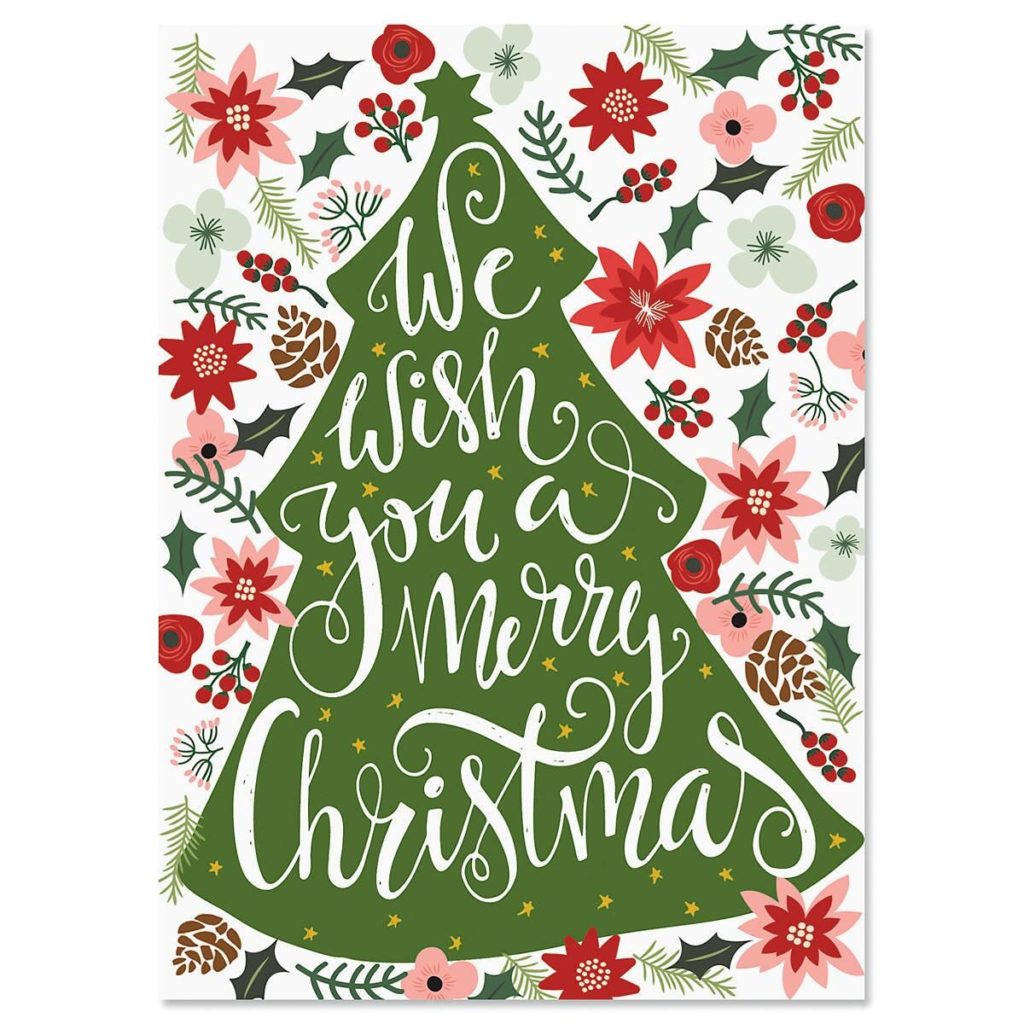When my husband and I first got married, we decided we’d make it a point to keep a current address list and send Christmas cards every year, whenever possible. Because of the nature of my husband’s job, which required us to move every couple years, our family and friends were dispersed all over the country and sometimes this was the best way to keep in contact with people we didn’t talk to regularly. We already had a spreadsheet with about 250 addresses of people we’d invited to our wedding, so I thought it wouldn’t be too hard to get Christmas cards out to those same people. We have kept sending cards each year because we have had many people tell us they love receiving the updates and pictures, even if they haven’t seen us in person in years.

The first couple years, our card process went something like this:
- Check that addresses are up to date for those who may have moved
- Run a mail merge on MS Word to print 250 custom address labels
- Print 250 family pictures
- Write a family update letter
- Print 250 family update letters on 1/2 sheet
- Cut letters
- Fold letters
- Sign cards by hand
- Place letter and photo into each card
- Stuff cards into envelopes
- Affix address labels
- Stamp return address
- Seal envelopes with a sponge
- Apply stamp to envelope
- Mail cards
Even though I wasn’t addressing these by hand and I was doing the cards in bulk, it was still a BIG job to do so many because there were so many steps.
The parts that are value-adding are:
- Writing a letter
- Printing a letter
- Printing a photo
- Addressing the envelope
- Sealing the envelope
- Putting a stamp on the envelope
Over the years we have made improvements to the process, little by little.
Last year I hit the jackpot when I realized that I could cut out several steps and HOURS of work by printing the return address and mailing address directly on an envelope. This removed the steps of stamping a return address, and peeling and sticking an address label.
We also discovered that we could print photos as postcards with our update written on the back, and do it rather inexpensively (when you consider 250 cards, this is kind of important!). This eliminates the cutting and folding of letters. We don’t feel that a separate card was adding much value either, so the steps of signing and stuffing those are eliminated. Look at the process now:
- Check that addresses are up to date for those who may have moved
- Draft a family update letter
- Order 250 postcards with a picture on one side and update on another
- Run a mail merge on MS Word for 250 envelopes
- Feed envelopes into printer in small stacks
- Stuff post cards into envelopes
- Seal envelopes with a sponge
- Apply stamp to envelope
- Mail cards
The entire process can be done in just a few hours now, where it used to take a whole lot of manual cutting, stuffing, and sticking, over a course of a week or so.
If you were wondering why we don’t just print the addresses on the postcards and mail them without an envelope, at this point we feel that the security that an envelope provides in covering up our letter update makes it a value-adding step. However, that might change in the future.
Did you notice that when you make even a small update to a process (like assembling a Christmas card), if that process is repeated 250 times in a day or year, even a minor improvement adds up to huge savings of time, materials, labor, etc.
Do you have any processes in the holiday season that need a makeover? Comment below!

No Comments Yet